-
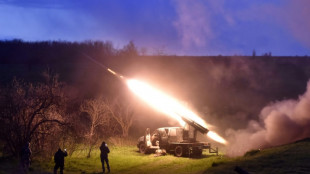 Arms makers see record revenues as tensions fuel demand: report
Arms makers see record revenues as tensions fuel demand: report
-
Trump optimistic after Ukraine talks as Rubio says 'more work' needed
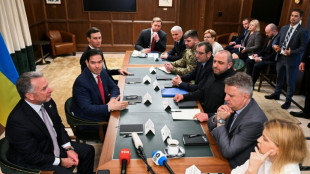
-
 Real Madrid title hopes dented at Girona in third straight draw
Real Madrid title hopes dented at Girona in third straight draw
-
Pau beat La Rochelle as Hastoy sent off after 34 seconds
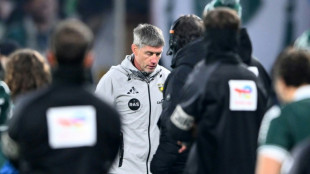
-
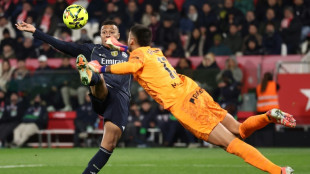 Real Madrid drop points at Girona in third straight Liga draw
Real Madrid drop points at Girona in third straight Liga draw
-
Napoli beat rivals Roma to join Milan at Serie A summit

-
 Shiffrin bags 104th World Cup win with Copper Mountain slalom victory
Shiffrin bags 104th World Cup win with Copper Mountain slalom victory
-
Disney's 'Zootopia 2' rules Thanksgiving at N. American box office

-
 Arteta takes heart from Arsenal escape in Chelsea battle
Arteta takes heart from Arsenal escape in Chelsea battle
-
Duplantis and McLaughlin-Levrone crowned 'Athletes of the Year'

-
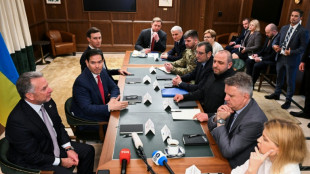 Rubio says 'more work' required after US-Ukraine talks in Florida
Rubio says 'more work' required after US-Ukraine talks in Florida
-
McLaren boss admits team made strategy blunder
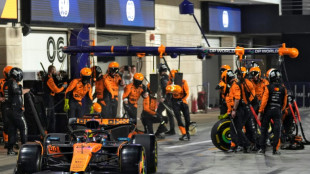
-
 West Ham's red-carded Paqueta slams FA for lack of support
West Ham's red-carded Paqueta slams FA for lack of support
-
Ramaphosa labels US attacks on S.Africa 'misinformation'
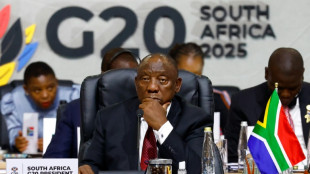
-
 Relaxed Verstappen set for another title showdown
Relaxed Verstappen set for another title showdown
-
Van Graan compares Bath match-winner Arundell to Springbok great Habana
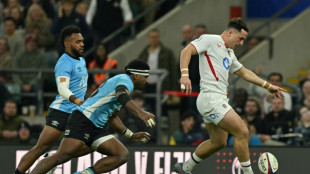
-
 Arsenal held by 10-man Chelsea, Isak end drought to fire Liverpool
Arsenal held by 10-man Chelsea, Isak end drought to fire Liverpool
-
Slot hails 'important' Isak goal as Liverpool beat West Ham

-
 Merino strikes to give Arsenal bruising draw at 10-man Chelsea
Merino strikes to give Arsenal bruising draw at 10-man Chelsea
-
Thauvin double sends Lens top of Ligue 1 for 1st time in 21 years

-
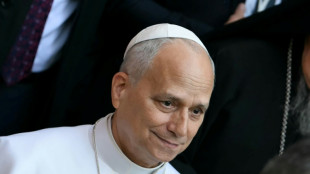 Pope urges Lebanese to embrace reconciliation, stay in crisis-hit country
Pope urges Lebanese to embrace reconciliation, stay in crisis-hit country
-
Arundell stars as Bath top Prem table with comeback win over Saracens
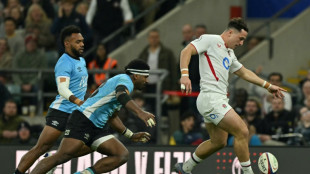
-
 Villarreal edge Real Sociedad, Betis win fiery derby
Villarreal edge Real Sociedad, Betis win fiery derby
-
Israel's Netanyahu seeks pardon in corruption cases
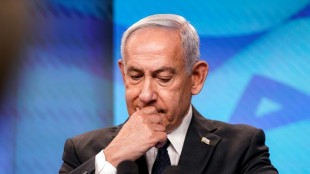
-
 Verstappen wins Qatar GP to set up final race title showdown
Verstappen wins Qatar GP to set up final race title showdown
-
Afghan suspect in Washington shooting likely radicalized in US: security official

-
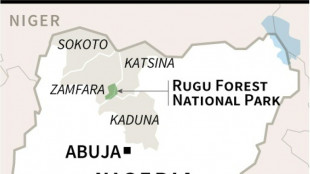 Pastor, bride among 26 kidnapped as Nigeria reels from raids
Pastor, bride among 26 kidnapped as Nigeria reels from raids
-
Trump officials host crucial Ukraine talks in Florida
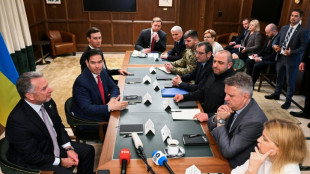
-
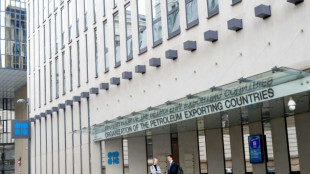 OPEC+ reaffirms planned pause on oil output hikes until March
OPEC+ reaffirms planned pause on oil output hikes until March
-
Kohli stars as India beat South Africa in first ODI

-
 Long-lost Rubens 'masterpiece' sells for almost 3 mn euros
Long-lost Rubens 'masterpiece' sells for almost 3 mn euros
-
Set-piece theft pays off for Man Utd: Amorim

-
 Isak scores first Premier League goal for Liverpool to sink West Ham
Isak scores first Premier League goal for Liverpool to sink West Ham
-
Death toll from Sri Lanka floods, landslides rises to 334: disaster agency

-
 Martinez double at Pisa keeps Inter on heels of Serie A leaders AC Milan
Martinez double at Pisa keeps Inter on heels of Serie A leaders AC Milan
-
Swiss reject compulsory civic duty, climate tax for super-rich
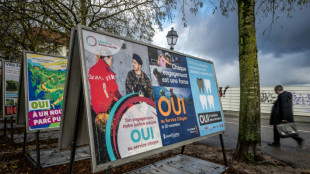
-
 Moleiro snatches Villarreal late winner at Real Sociedad
Moleiro snatches Villarreal late winner at Real Sociedad
-
Pope arrives in Lebanon with message of peace for crisis-hit country
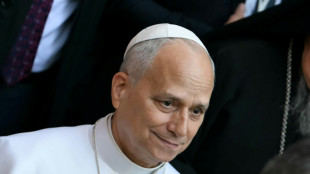
-
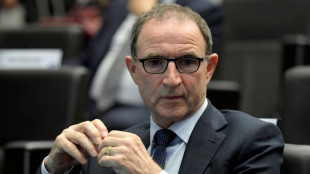 Celtic close on Scottish leaders Hearts after beating Hibs
Celtic close on Scottish leaders Hearts after beating Hibs
-
Swiss right-to-die group says founder dies by assisted suicide
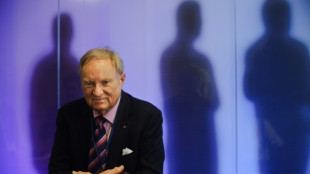
-
 Zirkzee ends goal drought to inspire Man Utd victory at Palace
Zirkzee ends goal drought to inspire Man Utd victory at Palace
-
Trump threats dominate as Hondurans vote for president
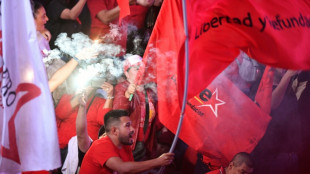
-
 Hong Kong in mourning as fire death toll climbs to 146
Hong Kong in mourning as fire death toll climbs to 146
-
West Ham legend Bonds dies aged 79

-
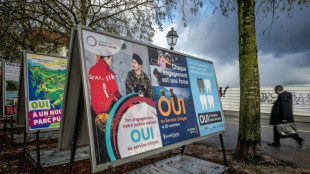 Swiss reject compulsory civic duty, climate tax for super-rich: projections
Swiss reject compulsory civic duty, climate tax for super-rich: projections
-
Kohli's 135 powers India to 349-8 in first South Africa ODI

-
 Indonesia, Thailand race to find missing as flooding toll tops 600
Indonesia, Thailand race to find missing as flooding toll tops 600
-
After call for Christian unity, pope leaves Turkey for Lebanon
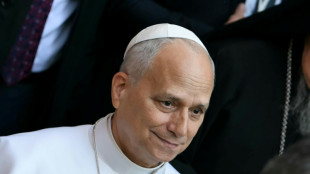
-
 Floods hit Sri Lanka's capital as cyclone deaths top 200
Floods hit Sri Lanka's capital as cyclone deaths top 200
-
Netanyahu submits pardon request in Israel corruption cases
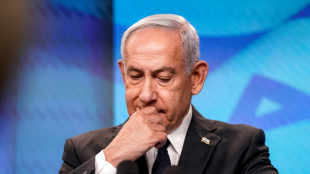
Trump vs Intel: Chip endgame?
When the White House converted previously pledged chip subsidies into a near-10% equity stake in Intel, it did more than jolt markets. It marked a break with decades of hands-off policy toward private industry and thrust the United States government directly into the strategy of a struggling national champion at the center of the global semiconductor race. Coming just days after the president publicly demanded the resignation of Intel’s chief executive, the move has raised urgent questions: Can state-backed Intel credibly become America’s comeback vehicle in advanced manufacturing—or does politicized ownership risk slowing the very turnaround it seeks to accelerate?
The deal gives Washington a formidable position in one of the world’s most strategically important companies without taking board seats or formal control. For Intel, the cash and imprimatur of national backing arrive amid a high-stakes transformation of its manufacturing arm and an intensifying contest with Asian foundry leaders. For the administration, it signals a willingness to intervene decisively where markets have been reluctant to finance multiyear, cap-ex-heavy bets with uncertain payoffs.
The optics were dramatic. On August 7, the president blasted Intel’s new CEO, alleging conflicts over historic business ties and calling for his immediate resignation. Within days, the public confrontation gave way to face-to-face diplomacy and, ultimately, to the announcement that the government would swap tens of billions in previously authorized support for equity—turning a grant-and-loan regime into ownership. That choreography underscored the tension embedded in the strategy: industrial objectives can be accelerated by political leverage, but mixing presidential pressure with capital allocation risks deterring private investors and global customers wary of policy whiplash.
Intel’s operational backdrop remains demanding. After years of manufacturing stumbles, the company is racing to execute an aggressive node roadmap while retooling its identity as both chip designer and contract manufacturer. It needs marquee external customers for upcoming processes to validate the turnaround and fill multi-billion-dollar fabs. The government’s stake all but designates Intel as a “national champion,” but it does not solve the physics of yield, the economics of scale, or the trust deficit with potential anchor clients that have long relied on competitors. Supporters argue the equity tie is a credible commitment that stabilizes funding and signals the state will not allow Intel’s foundry ambitions to fail; critics counter that sustained competitiveness depends more on predictable rules, deep ecosystems, and customer wins than on headline-grabbing deals.
The domestic manufacturing picture is mixed. Flagship U.S. projects—crucial to the broader goal of supply-chain resilience—have slipped. Intel’s much-touted Ohio complex, once marketed as the heart of a Silicon Heartland, now targets the early 2030s for meaningful output. Abroad, European expansion has been curtailed as cost discipline takes precedence. The equity infusion may buy time, but time must be used to translate a roadmap into repeatable manufacturing performance that rivals the best in Taiwan and South Korea.
Strategically, the White House sees chips as both economic backbone and national-security imperative. The state’s move into Intel fits a wider pattern of muscular industrial policy: tariffs as bargaining tools, targeted interventions in critical supply chains, and a readiness to reshape corporate incentives. Inside the tech sector, that posture is reverberating. Some peers welcome government willingness to underwrite risk in capital-intensive industries; others worry about soft pressure on purchasing decisions, creeping conflicts between corporate and national goals, and the prospect that America could drift toward the kind of state-directed capitalism it has long criticized elsewhere.
Markets are split. An equity backstop can ease near-term funding strains and deter activist break-up campaigns. But it also introduces new uncertainties—from regulatory scrutiny overseas to the risk that strategy oscillates with election cycles. Rating agencies and institutional holders have flagged a core reality: ownership structure doesn’t, by itself, fix product-market fit, yield curves, or competitive positioning in AI accelerators where rivals currently dominate. Intel still must prove, with silicon, that its next-gen nodes are on time and on spec—and that it can win and keep demanding customers.
The politics of the deal may matter as much as the financials. Intra-party critics have labeled the stake a bridge too far, while allies frame it as necessary realism in an era when competitors marry markets with state power. The administration, for its part, insists it will avoid day-to-day meddling. Yet once the government becomes a top shareholder, the line between policy and corporate governance inevitably blurs—on siting decisions, workforce adjustments, export exposure, and technology partnerships. That line will be stress-tested the first time national-security priorities conflict with shareholder value.
What would success look like? Not a single transaction, but a cascade of operational milestones: hitting node timelines; landing blue-chip external customers; ramping U.S. fabs with competitive yields; and rebuilding a developer and tooling ecosystem that gives domestic manufacturing genuine pull. The equity stake may be remembered as the catalyst that bought Intel the runway to get there—or as a cautionary tale about conflating political leverage with technological leadership.
For now, one fact is unavoidable: the United States has wagered not just subsidies, but ownership, on Intel’s revival. Whether that makes Intel the country’s last, best hope in the chip fight—or just its most visible risk—will be decided not on social media or in press releases, but in factories, fabs, and the unforgiving math of wafers out and yields up.

Argentina's radical Shift

Hidden Cartel crisis in USA

New York’s lost Luster

Europe’s power shock

Australian economy Crisis

Israel’s Haredi Challenge

Miracle in Germany: VW soars

Pension crisis engulfs France

A new vision for Japan

The Fall of South Korea?

Gaza on the cusp of civil war



